Bathrooms have evolved into more than just functional spaces—they now reflect personality, comfort, and design sensibility. From rustic charm to minimalist serenity, the style you choose can dramatically shape how the space feels and functions. Whether you’re remodeling, building new, or simply craving a refresh, understanding the most popular bathroom styles can help guide your decisions with clarity. This curated list breaks down a variety of looks that resonate with current trends while standing the test of time. If you want a space that balances beauty with practicality, the following ideas offer inspiring direction to suit every taste and layout.
Oxblood Accents
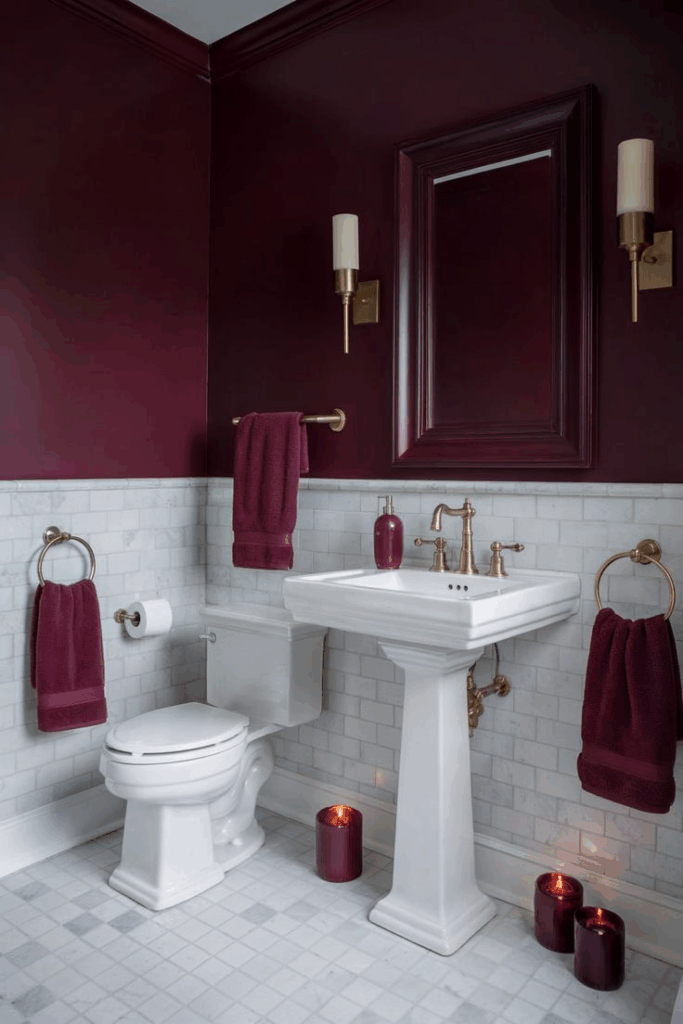
Deep tones like oxblood are gaining traction for their dramatic impact and luxurious appeal. In bathrooms, this intense burgundy hue works well as a statement color when used in moderation. Think painted vanity units, matte-finished cabinetry, or even a single accent wall behind a freestanding tub. The depth of oxblood adds visual weight and richness without overwhelming the space when paired with neutral surroundings. It partners beautifully with materials like aged brass, marble, and dark wood, enhancing the moody ambiance. Designers often recommend balancing it with lighter flooring or white ceiling trims to prevent the space from feeling overly enclosed. This color suits both traditional and modern settings depending on its application and accompanying fixtures. Its regal tone makes oxblood especially appealing for those wanting a bathroom that feels more bespoke and curated. Whether it’s used in tiles, textiles, or fixtures, oxblood invites a refined elegance that adds lasting visual interest.
Tile Drenching
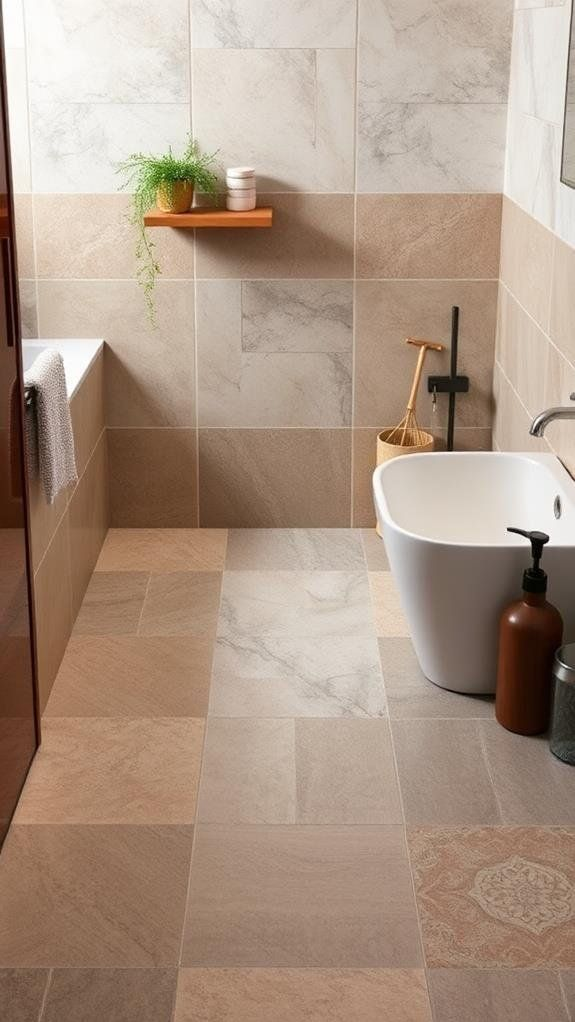
Using a single tile across floors, walls, and even ceilings creates a visually cohesive and immersive environment that feels custom and thoughtfully designed. This technique, known as tile drenching, provides a sense of continuity that is especially effective in compact spaces. Designers often favor this approach in wet rooms or curbless showers to reinforce seamless transitions and amplify spatial depth. Whether it’s glossy zellige tiles or honed natural stone, using the same material throughout adds texture and elevates the overall aesthetic. Tile drenching also allows the tile’s natural pattern or color to take center stage, minimizing distractions. When paired with minimalist fixtures and subtle lighting, the result feels high-end and serene. Maintenance becomes simpler, too, as uniform tile surfaces are easier to clean and more resistant to moisture damage. For a modern spa-inspired design, this method delivers a polished, architectural look that’s both practical and visually calming.
Gingham and Plaid Tiles
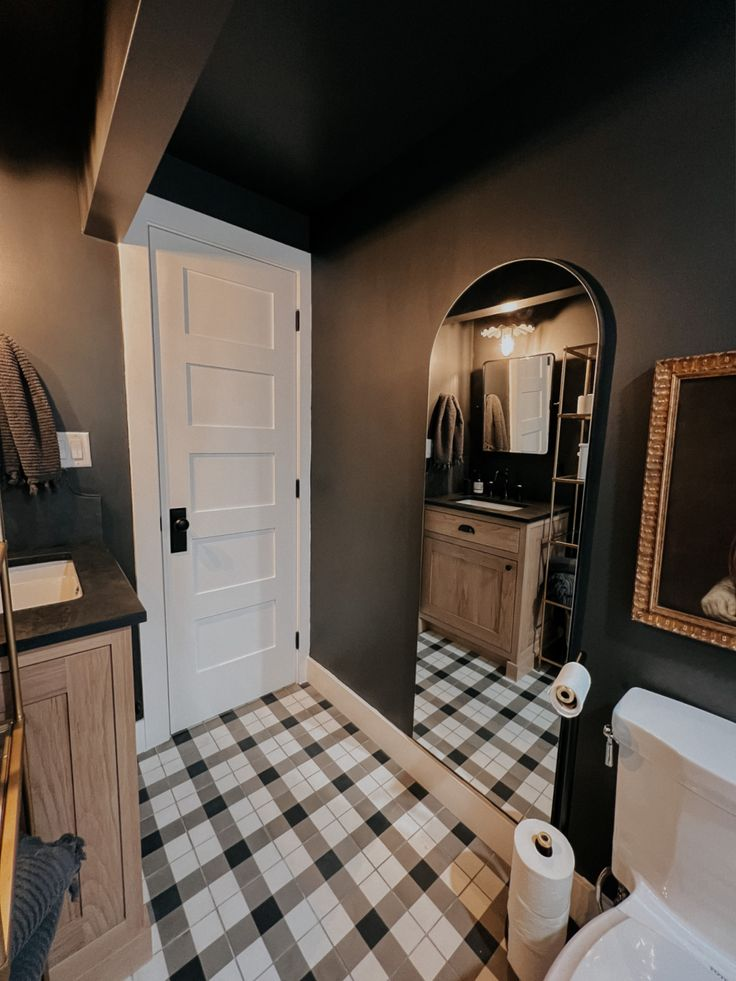
Checkered patterns have found their way into bathroom designs with a playful yet classic twist. Gingham and plaid tiles offer a nostalgic yet contemporary aesthetic, often reminiscent of countryside charm or vintage Americana. These patterns work wonderfully on bathroom floors and accent walls, delivering character and a tailored feel. While traditionally associated with fabric, their tile counterparts come in ceramic, porcelain, or even encaustic styles. Designers frequently use monochrome schemes for a refined finish or colorful contrasts to inject energy into the space. Plaid tiles in muted tones can soften a room’s overall look while still introducing visual texture. Meanwhile, gingham in bold hues can become a lively centerpiece, especially in powder rooms or kids’ bathrooms. These grid-like motifs lend themselves well to both modern farmhouse and eclectic interiors. When balanced with clean lines and simple fixtures, the result is a space that feels both familiar and fresh—perfect for homeowners seeking a timeless yet trend-conscious vibe.
Full Paneling
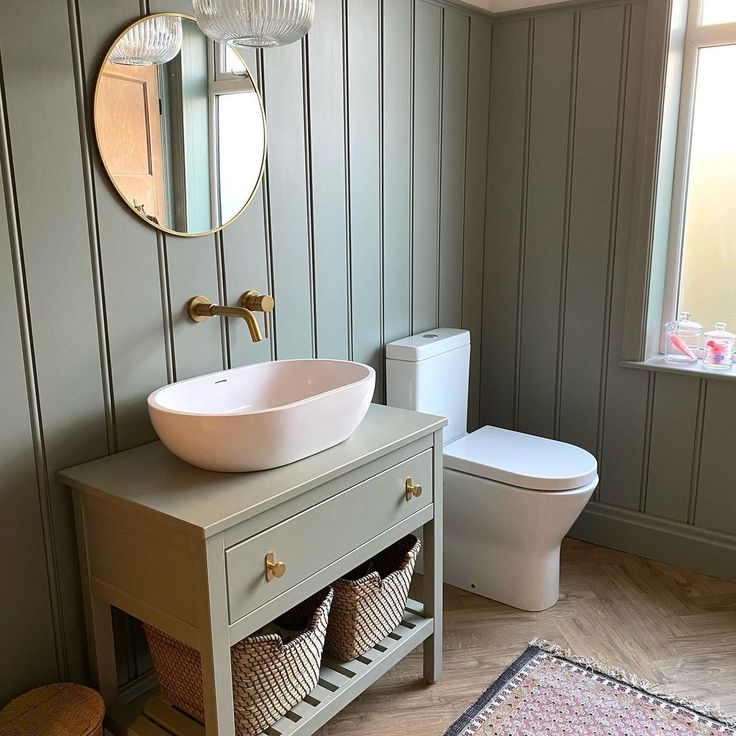
Wall paneling isn’t just reserved for libraries or dining rooms—it’s making a stylish comeback in bathrooms, too. Covering bathroom walls in wood or moisture-resistant MDF panels can create a warm, structured look while improving insulation and sound control. Vertical panels add height and dimension, while horizontal designs can stretch the room visually. Painted versions in soft neutrals or dark moody shades add personality without relying on conventional tiles. This technique works well in traditional homes, vintage-inspired designs, and coastal interiors, depending on the color and panel style. Many designers opt to panel half the wall and tile the rest for a classic English look, while others take it full-height for a statement finish. The added texture makes full paneling ideal for grounding a bathroom space without overwhelming it. With the proper sealants and ventilation, this style is both practical and aesthetically pleasing, offering a fresh yet timeless alternative to tiled walls.
Spa-Like Features
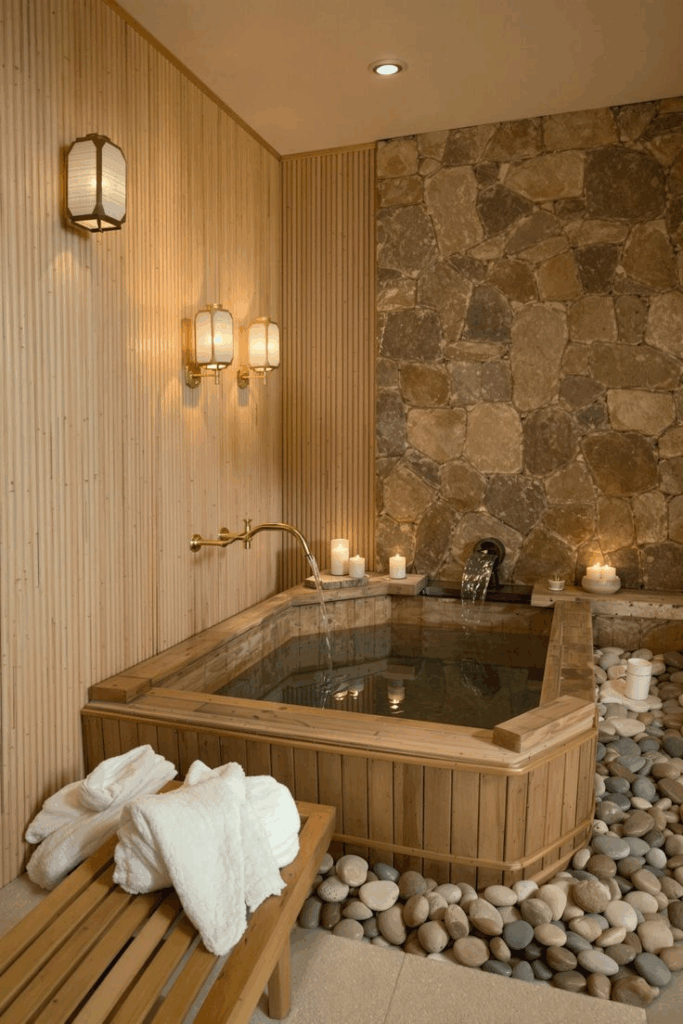
Wellness-focused design continues to lead bathroom trends, with spa-inspired features becoming household essentials. Rainfall showerheads, heated towel racks, and in-floor heating systems now rival the appeal of at-home gyms. Elements like deep soaking tubs, aromatherapy diffusers, and natural light enhance relaxation. Floating vanities and seamless walk-in showers contribute to an uncluttered, serene atmosphere. Designers frequently incorporate calming materials like light wood, linen, and stone to echo nature’s tranquility. Minimalist fixtures and concealed storage promote a tidy, stress-free environment that’s easy to maintain. Neutral palettes and layered lighting—including dimmable sconces and skylights—create a sense of balance and retreat. Even small bathrooms can feel indulgent with thoughtful updates, such as sound systems or built-in niches for candles and oils. The goal is to foster restoration and mindfulness through environment, proving that luxury and function are not mutually exclusive. These wellness-driven enhancements elevate daily routines into self-care rituals.
Sustainable Materials

Eco-conscious homeowners are increasingly prioritizing sustainability in bathroom design. Choosing renewable, low-impact materials helps reduce environmental footprints without sacrificing style. Bamboo vanities, recycled glass tiles, and FSC-certified wood cabinetry are excellent starting points. Water-efficient fixtures like dual-flush toilets and low-flow faucets conserve resources while cutting utility bills. Cement alternatives such as microcement or terrazzo made with recycled aggregates deliver durability with eco-benefits. Even paint choices are evolving, with non-toxic, VOC-free formulas becoming the new norm. Flooring trends include cork and reclaimed wood sealed with moisture-resistant coatings, both of which are biodegradable and renewable. Designers also turn to stone remnants for countertops, minimizing waste and introducing unique character. Upcycling vintage furniture into vanities or shelving units adds charm while avoiding landfill contribution. Sustainability doesn’t mean compromising aesthetics—it means creating lasting, responsibly sourced spaces. With advancements in green technology, homeowners can now enjoy elegant, long-lasting designs that support healthier lifestyles and a cleaner planet.
Mixed-Metal Finishes
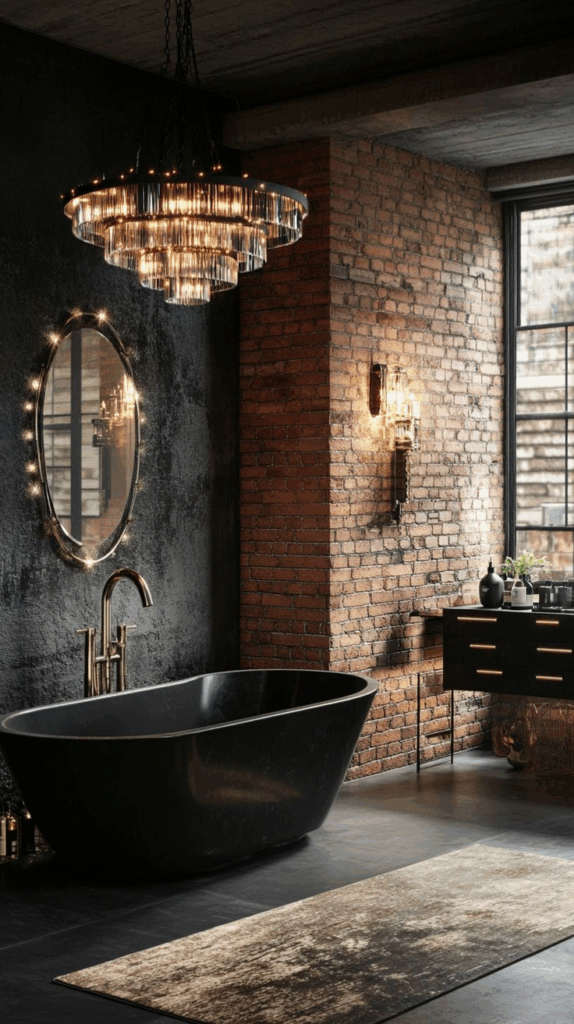
Monotone fixture schemes are giving way to bolder, more curated combinations. Mixed-metal finishes add depth and dimension to bathrooms, allowing designers to blend vintage and contemporary sensibilities. Brass faucets paired with matte black towel bars, or chrome lighting alongside oil-rubbed bronze mirrors, introduce contrast without chaos. This trend encourages personalization and creativity, steering away from the overly matchy-matchy look of past decades. When executed thoughtfully, it creates a layered, lived-in feel. A key rule is to stick to two or three complementary finishes for cohesion. For instance, warm-toned metals like brass or gold balance well with cooler tones such as nickel or black. The mix can be subtle or striking, depending on application scale and balance. These combinations also work well across multiple design styles—from industrial lofts to transitional and modern farmhouse bathrooms. With proper planning, this approach results in a space that feels sophisticated, intentional, and refreshingly non-uniform.
Curbless Showers

Barrier-free shower designs are redefining modern bathroom functionality. Curbless showers eliminate the raised edge between the shower and the rest of the floor, creating a continuous surface that enhances accessibility and aesthetic flow. This design is especially valuable for aging-in-place renovations or families seeking easy, slip-resistant transitions. Floor tiles typically slope subtly toward a linear or hidden drain to manage water effectively. These showers often incorporate frameless glass panels to maintain openness while containing moisture. Popular in minimalist and spa-style settings, curbless showers also maximize visual space, making small bathrooms feel larger and more open. With fewer obstructions, cleaning becomes quicker and simpler. Pairing this layout with textured floor tiles improves safety, while wall-mounted fixtures and benches increase functionality. Whether part of a wet room or a standalone feature, this design is rooted in universal design principles. It’s a practical yet elegant solution that aligns with modern expectations for both style and accessibility.
Textured Surfaces
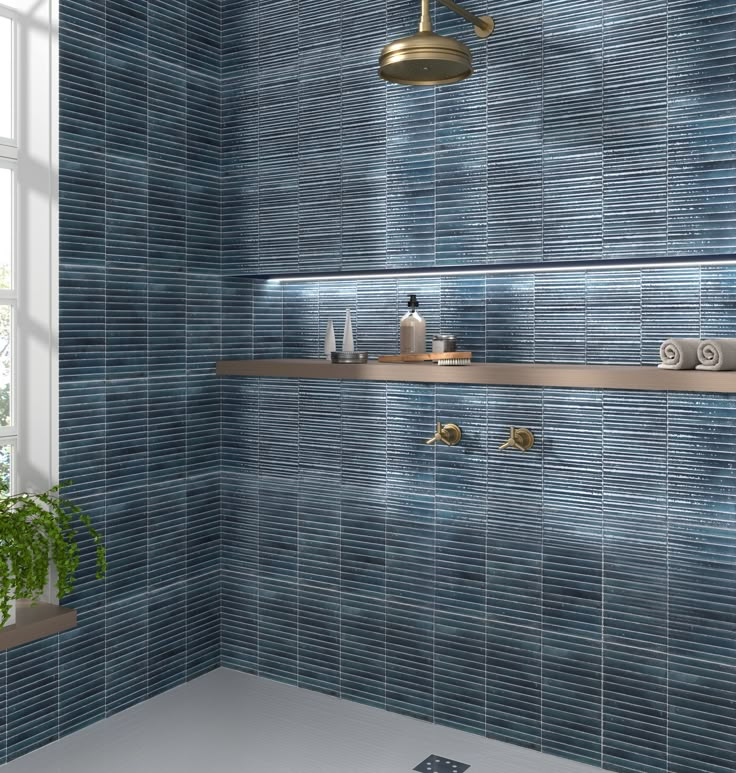
Visual flatness is being replaced by tactile appeal in today’s bathroom trends. Textured surfaces—from fluted tiles to rough-cut stone and grooved wood panels—add layers of visual interest while offering a sensory element. These finishes catch natural and artificial light in dynamic ways, enriching the space without relying on bold colors or ornate fixtures. Fluted vanities, ribbed walls, and handmade tiles are particularly popular for their artisanal, imperfect charm. Textures also provide functional benefits, such as non-slip surfaces in wet zones or hiding minor wear over time. When layered with smooth finishes like polished metals or glass, the interplay enhances contrast and sophistication. Textured wall panels in neutral tones allow for interest without clutter, making them ideal for minimalist or Scandinavian-inspired bathrooms. Designers are increasingly integrating these surfaces to break visual monotony and add depth, proving that subtle dimension can be more powerful than excessive decoration. This approach highlights craftsmanship and materiality as central elements of contemporary design.
Smart Technology Integration

Technology is transforming bathrooms into high-performance, user-centered environments. From voice-activated mirrors and motion-sensor faucets to app-controlled showers and lighting systems, convenience is becoming central to modern design. Smart toilets with heated seats, built-in bidets, and automatic flushing offer hygiene and comfort, while digital thermostats allow precise control of floor and towel warmer temperatures. These features not only elevate the user experience but also improve energy efficiency and water conservation. Customization options—like personalized shower profiles or mood lighting presets—support daily routines and enhance well-being. Integration is becoming more seamless, with devices hidden or built directly into architectural elements to maintain clean lines. Even medicine cabinets now include USB ports and integrated defogging mirrors. Designers recommend prioritizing interoperable systems that work across platforms for easier control. As smart technology continues to evolve, bathrooms are becoming intuitive sanctuaries that blend form, function, and futuristic appeal. Homeowners now view these upgrades as investments in comfort and long-term value.
Earthy and Neutral Tones
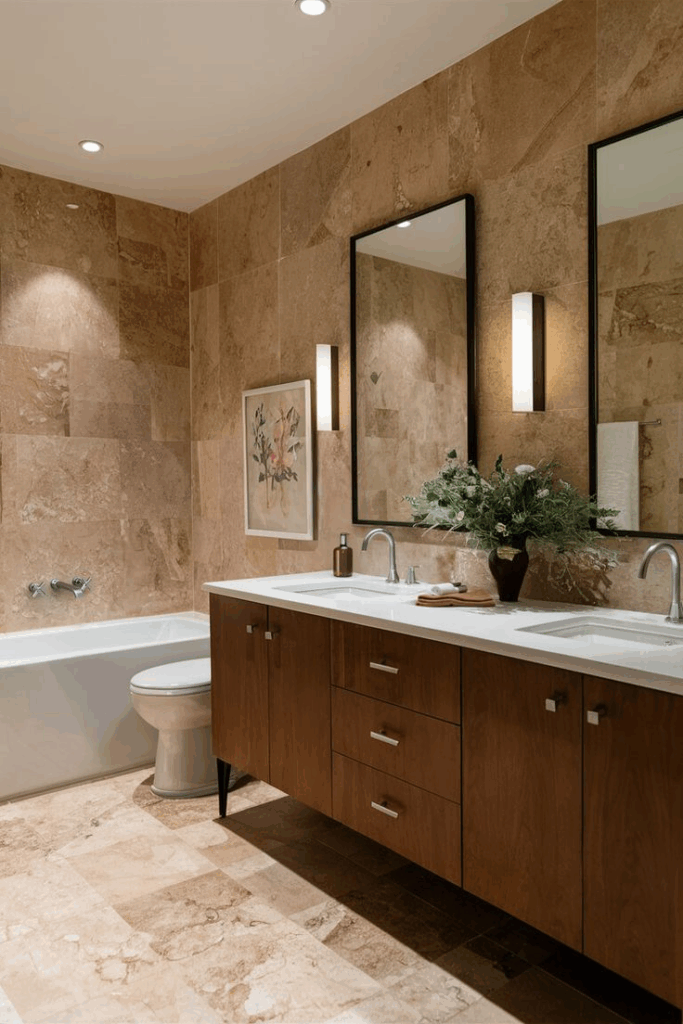
Color palettes grounded in nature continue to dominate bathroom design in 2025. Earthy and neutral tones create a sense of calm and authenticity, setting the stage for restorative spaces. Shades like sand, taupe, clay, and sage provide warmth without overwhelming the senses. These hues work especially well with natural materials like wood, limestone, and terracotta. Their versatility allows for subtle layering, helping designers achieve depth through tone rather than pattern. Neutral walls paired with organic textures and simple fixtures lend themselves to both rustic and modern aesthetics. Even small bathrooms benefit from these shades, as they open up the space visually while maintaining a cozy ambiance. Paint manufacturers and tile brands are offering expanded options in matte and textured finishes to enhance the lived-in appeal. This tonal approach harmonizes beautifully with wellness-inspired features and sustainable choices. Earthy color schemes evoke balance, making them a timeless favorite among designers and homeowners alike.
Vintage-Modern Fusion

Blending retro influences with present-day functionality is redefining bathroom aesthetics. Vintage-modern fusion mixes classic details—such as clawfoot tubs, pedestal sinks, or antique mirrors—with contemporary updates like wall-mounted taps or smart lighting. The result feels layered, personalized, and visually compelling. Designers often start with a single vintage anchor piece and build a clean, modern context around it, using minimalist cabinetry or neutral wall finishes to ground the style. Brass or brushed gold accents work well across both eras, while hexagonal tiles and exposed plumbing nod to the past without compromising efficiency. Homeowners love this approach for the character it brings—each space feels unique, curated, and nostalgic yet current. Balancing proportions and finishes is essential to ensure neither style overpowers the other. The juxtaposition of old and new not only maximizes design flexibility but also resonates with those who value both heritage and innovation in their interiors.
Bold Wallpaper and Paint
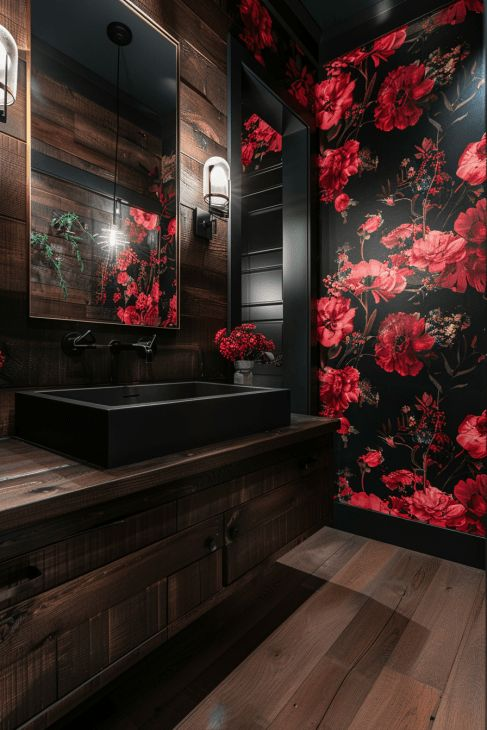
Bathrooms are no longer purely functional—they’re evolving into personalized sanctuaries. Homeowners are designing wellness spaces tailored to their specific needs, from chromotherapy showers to in-mirror fitness apps and built-in steam rooms. Designers are prioritizing features like infrared saunas, foot spas, and custom scent dispensers to elevate daily routines. Zones for relaxation and rejuvenation are increasingly popular, often distinguished by lighting schemes, soundscapes, and material changes. Wellness-centered layouts also include meditation nooks or yoga stretches near the tub or window seat. Biophilic design elements such as natural wood, indoor plants, and stone textures create harmony and reduce stress. Personalized layouts enhance comfort by considering individual rituals, whether it’s skincare, deep soaking, or aromatherapy. The result is a highly functional yet emotionally nourishing environment. With wellness at the forefront, bathrooms are becoming pivotal spaces for mental clarity and physical renewal—customized not just for beauty, but for balance.
Natural Elements
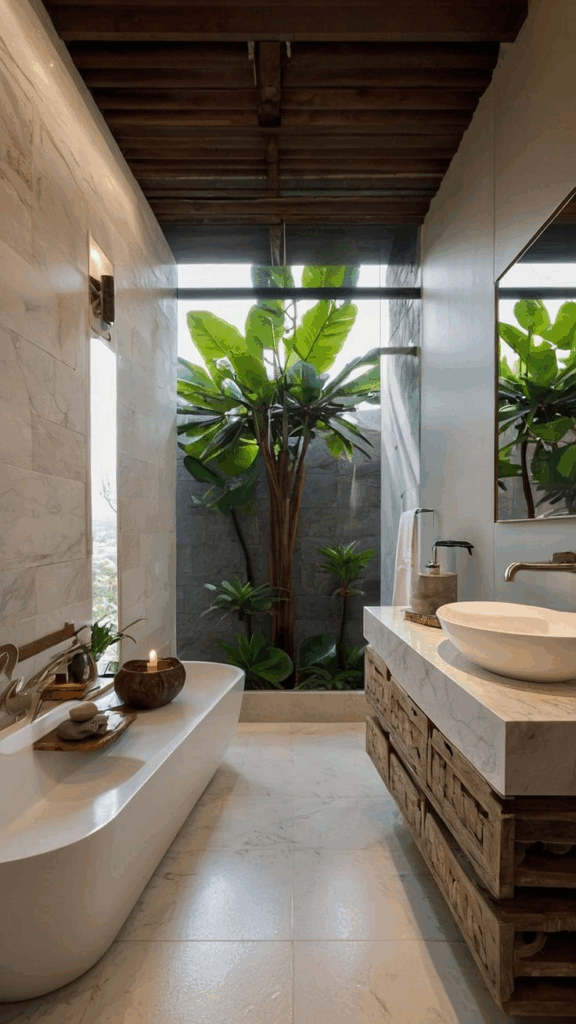
Organic materials are making bathrooms feel more grounded and inviting. Raw-edge wood vanities, river rock floors, linen curtains, and jute rugs introduce texture and a sense of nature indoors. These elements contrast beautifully with sleek fixtures, softening modern designs and reinforcing harmony. Designers often use live-edge shelves or reclaimed wood accents for their tactile quality and character. Stone sinks, clay pots, and woven baskets further enhance the earthy ambiance. Natural light plays a vital role, with skylights or large windows becoming focal features. Even handmade ceramic tiles contribute to the handcrafted, nature-inspired mood. The shift toward biophilic design emphasizes wellness, sustainability, and emotional comfort. These spaces feel organic, intentional, and deeply connected to the environment—an antidote to overly sterile or synthetic interiors. Natural elements aren’t just trendy; they’re timeless components that enrich bathroom aesthetics while promoting tranquility and authenticity.
Personalized Wellness Spaces
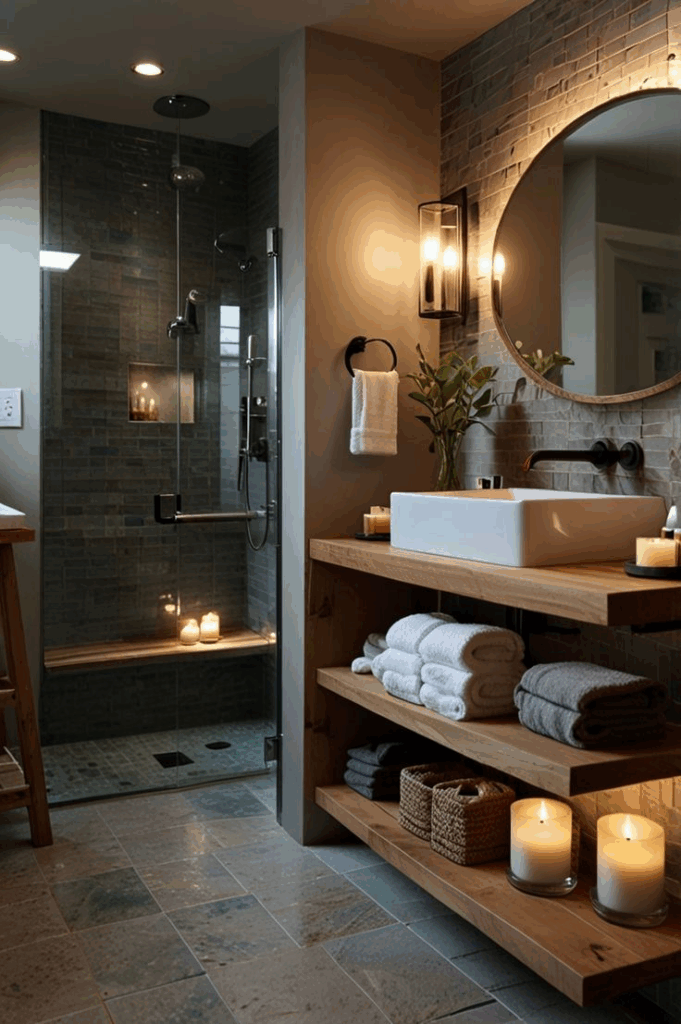
Prioritizing well-being in bathroom design has inspired a growing trend toward personalized wellness spaces that reflect individual routines, health goals, and sensory preferences. These spaces go beyond functionality, offering a sanctuary-like experience tailored to support mental, emotional, and physical rejuvenation. Think custom aromatherapy dispensers, chromotherapy lighting systems, or integrated soundscapes that play calming nature tones or guided meditations on demand. Homeowners are also embracing elements like infrared saunas, cold plunge tubs, or steam showers—each selected to align with specific wellness intentions.
Designers are emphasizing fluid layouts, natural materials, and clutter-free aesthetics to create a restorative atmosphere. Built-in seating, mood lighting, and even greenery are carefully chosen to reduce stress and promote balance. Personalized touches such as monogrammed towels, curated bath product niches, and smart mirrors with health-tracking capabilities enhance the daily ritual. Rather than replicating spa features, these bathrooms are intimate, restorative hubs tailored to one’s lifestyle. Whether for athletic recovery, mindfulness, or skincare routines, personalized wellness spaces turn the bathroom into a meaningful retreat that supports everyday self-care with intention and sophistication. This focus on personalization ensures users feel genuinely connected to the space, making wellness a seamlessly integrated part of their daily environment.
